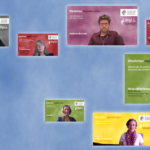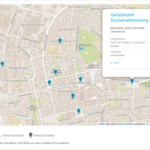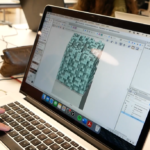Signpost for digital teaching
Do you wonder what the potentials are in digitally supported teaching?
Which digital tools can help with specific challenges in teaching practice? Whether there are any proven concepts of digitally supported teaching for specific course formats or teaching scenarios? How much effort is involved in them? In short: Would you like a kind of signpost through the jungle of digital teaching possibilities?
Even if there are no quick and easy answers to these questions, no magic formulas, we would like to try and give you some suggestions and help in our series of contributions „Signpost for Digital Teaching“ by answering specific questions from everyday teaching life .
In this article we address the question
How can I use digital media to boost students‘ learning motivation?
Didactic considerations:
From a didactic point of view, students‘ motivation to deal with a particular teaching topic is an essential factor in learning success. Ideally, however, not only should demotivation be avoided, but enthusiasm for the topic should be kindled – in other words, the appropriate learning resources and paths should create intrinsic and performance motivation. But good feedback and peer learning are also important factors for successful learning. More on this in the article „How do I motivate my students?“ at einfachlehren.de [information in German only].
Digital media can be used to specifically promote individual aspects that contribute to the promotion of precisely this motivation. We’ll introduce you to some of the options in the following section.
Digital media can help to „pick up“ students in everyday life“
At the beginning of a course, it is important to build on the everyday knowledge and experience of the students. This helps to „pick up“ students from their current world, and can also initially create awareness („What has this got to do with the topic?“) through bemusement. The advantage of this is that the initial irritation sets visual „anchors“ among the students that serve to consider the topic as relevant and in the meantime can also motivate them again (through association and meaning).
One example is the integration of an external video at the beginning of the course „Introduction to statistics“ [information in German only]. An exciting real event (the failed launch of the Challenger spaceship) is associated with the topic of statistics, thus clarifying the relevance of the subject.
Another option is to introduce students to the topic of the course by means of a question that anyone can answer (Have you ever …?“) or an estimation question („What do you think about …?). This can be done with the live voting system PINGO . It is important not to make the questions too simple in order to encourage everyone present to participate.
After all, it also makes it easier to embark on a course if you occasionally make the introduction to topics amusing. See the article on „Humour in teaching“ at einfachlehren.de [information in German only].
Promoting feedback and peer learning using digital offers
One key factor that motivates students is receiving feedback on their performance or learning success. So for example, in the self-study phase tests in Moodle [information in German only] can help to check and documents one’s level of knowledge and learning progress. Students are motivated by their visible learning progress (but: different levels need to be taken into account so that demotivation is not triggered by tasks that are too easy or too difficult at the beginning) – graduated levels of difficult are useful here. Teachers can also get an idea of the learning progress during the lecture by asking a challenging question with PINGO and are then better able to assess how well the participants have understood important topics or are able to involve the students and thereby activate them [information in German only]. It can also provide feedback on the speed of teaching or on the comprehension of what was presented.
Activating questions in the classroom can also be linked to peer learning. For example, the „Peer instruction“ method is used in the „Sensor technology“ event [information in German only] to engage students in conversation with each other and thereby generate learning success through discussions of the right solution.
Gamification increases learning motivation
Another method for motivating students with a game-based approach provides certainty with regard to knowledge progress and enables the comparison with peers, creating incentives for continuous discussion of the material. This can also be extended with a reward or badge system to create additional incentives.
Gamification is generally defined as „the use of game design elements, characteristic for games, in non-game contexts“ Deterding et al (2011). Simões et al (2013) also underline the relevance of the social elements in this field, and especially for those users who use social networks on a daily basis. Common features with gamification include user loyalty, success and user recruitment through a social network.
The game-based online offer „ToyBlocks“ [information in German only] has been used in the field of architectural history since 2015. Students are able to use different game modes to test and deepen their knowledge or refresh it before an exam.




